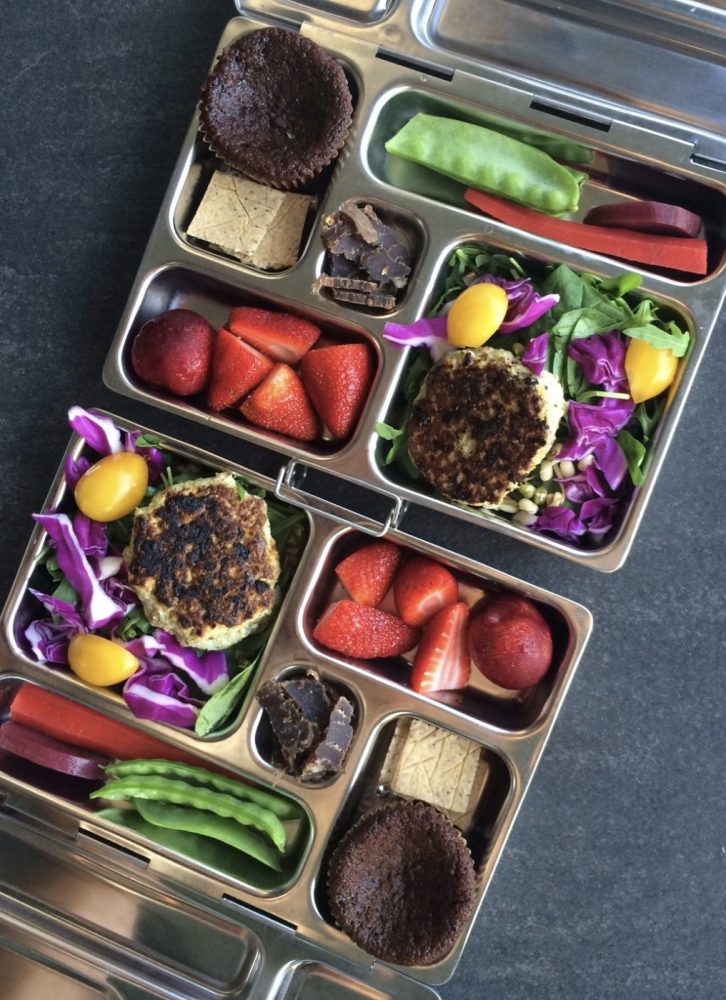5 healthy lunchbox swaps (to improve health & learning) - Guest blog with Naturopath Georgia Harding

About a third of what your kids eat on a school day most likely comes from their lunch box. Therefore it’s essential to their health, wellbeing and ability to learn that they eat a lunch that fuels them well.
Our guest blogger, Georgia Harding is a Gold Coast based Naturopath (19 years exp.), mum, cookbook author and creator of The Well Nourished Lunch Box Challenge. She shares her inspiring health advice and free, nourishing, family friendly recipes on her popular website // www.wellnourished.com.au
Here are her 5 healthy lunchbox swaps to help improve health and learning!

Often it’s the little things that make a big difference to the nutritional value of their lunchbox. Small changes can make such a big difference to their overall health and wellbeing. So I thought I’d put together a list of healthy lunchbox swaps – things that you might like to chip away at to improve your kids school lunches (and therefore health).
I always recommend that changes are made gradually (it’s human nature to resist change so slow and steady will always win the race when it comes to making changes to the way kids eat).
Swap margarine/spreadable butter (or any spread containing vegetable oils) for plain old butter
I’ve written extensively about why butter, in my opinion, is the only choice (and how damaging to our health vegetable oil containing spreads are) here. This post also includes suggestions for other healthy spreads besides butter.
The thing is, the linoleic acid (the main fatty acid in vegetable oil), accumulates in the fat cells of the body, as well as in cell membranes and this is detrimental to your kids longterm health. The more you can avoid vegetable oils, the better off your kids will be.
Swap additive laden breads for real bread
Bread is a food that features heavily in many kids lunch box. However the average supermarket loaf today contains up to twenty ingredients. Some of the preservatives have even been linked to behavioural and learning problems in children so it’s super important beds continuing preservatives aren’t part of your kids lunch. If you need help choosing a better break, this post will guide you.
To make bread all that is needed is four ingredients – flour, water, salt and a rising agent (yeast or sourdough). The less processed a food is, the better it is for your kids and bread is no exception. In short, bread with lengthy ingredient lists are to be avoided.
Swap processed (deli) meats for leftover home-cooked meats
Processed deli meats contain a number of additives and preservatives that are simply not going to serve your kids well. It is so easy when you’re cooking dinner, to cook extra meat for school lunches. It can be portioned and either kept in the fridge or freezer to add to school lunches as required.
Often when I’m roasting one piece of meat, I’ll double it up and use it the following week in the kids school lunch (to fill sandwiches, wraps, fresh rice paper rolls, sushi or just with salad).
Swap processed snacks for home made snacks
The best part about making your own sweet and savoury snacks for your kids lunchbox is that you have complete control over the ingredients and with a few basic pantry staples, you can make delicious, nourishing home made snacks easily. I bake once every 2-3 weeks (it takes no more than about an hour) and fill my freezer with a variety of healthy snacks to grab and pack (I pack from frozen).
I have a heap of easy to make, healthy snacks here if you are after recipe inspiration. Also check out the fantastic back to school offer on ‘The Well Nourished Lunchbox’ebook (details below).
If you’re not inclined to bake – how about swapping a processed snack for vegetable sticks and a dip? Every little improvement can make such a huge difference to the health and learning of your kids. If you have veggie-fussy kids, this post might be of interest.
Swap fruit juice for water or iced herbal tea
We are quite simply not evolved to consume any other liquid (at quantity) other than water. Fruit juice, even when freshly squeezed (and no added sugar) is a very concentrated source of sugar and will hinder your child’s ability to concentrate (as well as compromising their immune function).
The only other drink my kids might take to school is a good quality, unsweetened herbal tea (chilled in summer, hot in winter).
Tip to help resistant kids change
I believe seeking peer group support is a fabulous way to initiate change. Partner up with one of your kids friends parents and perhaps as a group ( including kids), discuss ways that they can change their lunches for the better, together. Before you know it it will be come a habit!
I know my own kids love to see other kids with lunches that look similar to their own. My son often comes home and tells me that one of his mates had a carrot or snow peas in his lunch, just like him!



